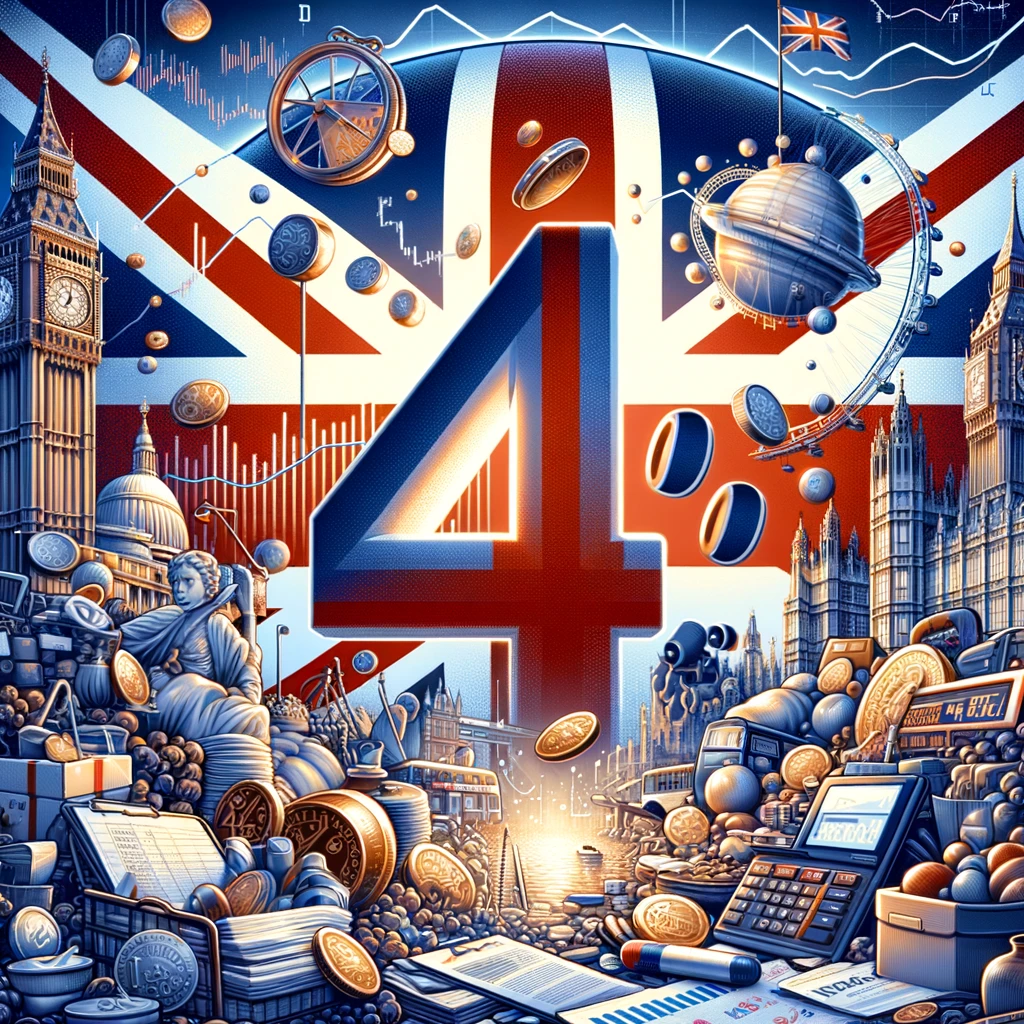As the financial world keeps its eyes peeled on the economic pulse of nations, the UK stands out this January with its inflation rate steadfast at 4%. While analysts had their bets on a slight uptick, the economy decided to play it cool, much to the chagrin of those expecting a drama. The Bank of England, that venerable institution, holds its breath for a sign, any sign, of easing price pressures.
Yet, here we are, with the Consumer Price Index (CPI) deciding to stick to its guns, not budging from December’s 4% annual rate. Contrary to the whispers of a 4.2% rise, the Office for National Statistics (ONS) threw a curveball with a flat rate, painting a picture of an economy that’s as unpredictable as British weather.
The Devil’s in the Details: Unpacking the Numbers
Peek behind the curtain, and you’ll find that the core CPI, which gives the cold shoulder to volatile items like energy and food, hasn’t moved an inch from 5.1%. Yet, the service sector decided to add a bit of spice, edging up from 6.4% to 6.5%. The British Pound, seemingly unimpressed, took a modest step back, hinting at the complex dance between economic indicators and currency value.
January’s performance was a mixed bag, with furniture and household goods playing it cool, allowing for a breather in the CPI’s month-on-month dip to -0.6%. This backtrack to negative territory, after December’s surprise hop to 0.4%, stirred the pot, especially against economists’ forecast of a 4.2% annual hike. The ONS was keen to highlight the push and pull in the economy, with housing and household services applying upward pressure, thanks in no small part to those ever-present gas and electricity charges. On the flip side, furniture, household goods, and the grocery aisle offered some relief, pulling back on the reins.
A Complex Dance: UK’s Economic Outlook
Diving into the goods versus services battle, the CPI for goods took a slight dip to 1.8%, but services didn’t get the memo, ticking up to 6.5%. This tango between different sectors underscores the UK’s unique position, boasting the highest services inflation among the G10. It’s a reminder of the ongoing struggle with inflation, despite having descended from the dizzying heights of 11.1% in October 2022.
The UK’s economic resilience is noteworthy, dodging recession bullets like a seasoned action hero, even as interest rate hikes aim to cool down inflation’s fever. The labor market, with its easing yet still robust wage growth, remains a double-edged sword for the Bank of England’s inflation targeting mission. As economists and analysts volley predictions back and forth, the UK teeters on the brink of a “slight technical recession,” with the economy’s next move as eagerly anticipated as the next season of a hit TV series.
In the grand scheme of things, the UK’s inflation narrative is a testament to the nation’s gritty determination to steer its economy through choppy waters. With energy bills and food costs expected to take a downward turn by spring, the journey back to the Bank of England’s cozy 2% inflation target seems less daunting. Yet, the specter of core and services inflation looms large, reminding us that the path to economic stability is rarely straightforward.





